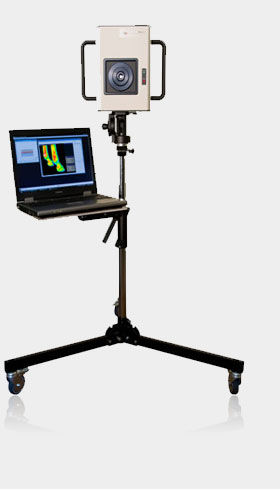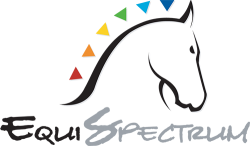Screening Equipment
We use only state of the art software and the highest definition FDA registered thermography cameras specifically designed for medical use.

EquiSpectrum screening devices are medical grade and are FDA registered for both veterinary & human use
The Meditherm IRIS640™ is designed and calibrated for optimal operation in the narrow temperature range pertinent to, and specific for detecting and recording metabolic heat, (10°C – 40°C).
It can apply specific and stable temperature ranges necessary for diagnosis during or after scanning.
Thermal mapping is more accurate with the meditherm scanning technology because each pixel is an individual temperature measurement (sensitive to 0.01°C ) that can be compared to any other pixel, the Meditherm IRIS 640™ can and does apply its total color range, (and range of temperature) to the horse alone which gives us far more sensitivity and specificity!
The accuracy and reliability (repeatability) we achieve is in part due to the efficiency of the thermoelectric cooling of the detector, (our system does not suffer from the problems of ‘thermal drift’ as do some un-cooled cameras).
This isn’t always easy in practice, but the increased sensitivity and specificity allows you to still record accurate images with far less critical protocols.
The Meditherm IRIS 640™ does not rely on lenses but can focus a region of interest from 2″ to infinity while still detecting 100% of infrared radiation.
Meditherm IRIS 640™ instantly saves each image to the laptop or PC with no intermediary steps. Image manipulation and statistical data is instantly available for each and every image whether saved or not.
Thermograms are stored as TIFF images, which can be accessed and manipulated with a wide range of off-the-shelf application software.
Industrial equipment is designed for Primarily industrial use, i.e. building inspections, moisture intrusion analysis, & electrical surveys.
All industrial systems are designed primarily for industrial use and detect temperatures from 0°C to well over 150°C so the sensitivity of the detector array is spread over a much wider potential temperature range, (Temperature difference from hottest to coldest or the window of temperatures detected) Although this range can be adjusted it is the automatic averaging of the hottest and coldest measurements recorded throughout the whole image which are constantly changing that cause problems and further confuse the results.
The actual picture of the horse seen with industrial is a ‘colormap’ divided throughout the total range of temperature seen by the array. The colors that are used in the thermogram are divided though-out the whole range of temperatures detected, i.e. the background around the horse will be using up some of the allocated colours (and sensitivity), hence a loss of specificity. Features like ‘edge enhancement’ are also used at the expense of specificity.
Industrial technology is not as suitable for veterinary applications because of it’s averaging of groups of pixels in order to handle the ‘bad’ pixels, thermograms produced with un-cooled FPA also suffer from ‘thermal drift’ and poor range control.
To achieve usable results with a industrial very strict operating protocols have to be followed.
The optics used with industrial systems actually reduce their detection accuracy as these lenses can stop from 10% to 20% of infrared radiation being detected.
Using a small handheld industrial camera each image is viewed through the limitation of an eyepiece, and then a decision has to be made whether to ‘freeze’ the frame and download ether to a memory card (limited number of images) or to a bigger computer for analysis and interpretation.
